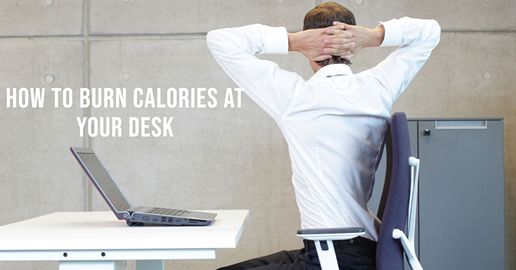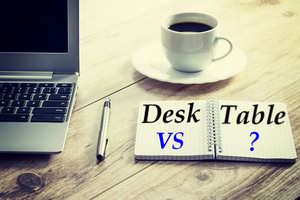
In today’s world, many of us spend most of our day in the office. Long outstanding work in the same position can have a negative impact on our health and fitness. However, there are useful tips and exercises that can help us burn calories and stay active even when functioning.
Table of Contents
How to Burn Calories While Working in the Office: Useful Tips and Exercises
The first tip is to take a break; get up from the office every hour for a few minutes of warm time. Simple exercises such as push-ups, lunges, and abdominal exercises can help activate muscles and increase overall physical activity.
Small stretches can also be very helpful. Raise and stretch hands high, pull neck and shoulder muscles, and do torso turns and spins. Stretching helps release strength and improve traffic.
Proper posture is also an important aspect of activity at work. Keep your back straight and do not bend your work. A locked posture leads to energy loss and calorie burning.
Good Nutrition
Good nutrition plays an important role in our lives, especially when we work in our offices. Due to our sedentary lifestyle and lack of physical activity, it is especially important to maintain a healthy diet in order to burn all the nutrients and calories we need.
- First, eating small amounts of food is good, but often. This approach helps keep metabolism at a high level and avoids consuming. Additionally, instead of fast snacks at the office, it is advisable to choose foods rich in healthy nutrients, such as fruits, vegetables, nuts, and yogurt.
- Second, protein foods are worth considering. Protein contributes to increased satiety, maintains muscle mass, and promotes metabolism. Consumption of foods purchased from stores rich in unhealthy fats and sugar should be limited. Instead, opt for meat, fish, eggs, dairy products, tofu, beans, and other protein sources.
- Attention should also be paid to carbohydrates. Since they are the body’s energy source, it is important to consume them in sufficient quantities. However, for example, healthy grains, vegetables, and fruits should favor complex carbohydrates. They help maintain stable blood sugar levels and prevent overconsumption food.
- Don’t forget the fats. Healthy fats such as olive oil, avocados, and nuts not only provide essential fatty acids but also help control your appetite. It should be noted, however, that they contain a lot of calories. Therefore, you need to keep in mind that your intake should be balanced and not excessive.
Ideally, your diet should be varied, balanced, and contain all the nutrients you need. It is important to remember that proper nutrition is about burning calories as well as supporting your overall health, immune system, and energy levels throughout the day.
Eat healthy foods
Proper nutrition is one of the key aspects of staying healthy while working in the office. Eating healthy foods provides the body with all the nutrients it needs and helps minimize the damage caused by a sedentary lifestyle.
One of the most important foods for people who work at computers are nuts. They are rich in iron, calcium, and vitamin B, which help fight stress and prevent fatigue. It is recommended that you consume a small amount of nuts daily to keep your energy and concentration high.
It is also important to include fresh fruits and vegetables in your diet. They contain large amounts of vitamins, minerals, and antioxidants that contribute to strengthening the immune system and fighting free radicals and other harmful environmental influences.
To maintain healthy skin and hair, it is recommended that they be included in dietary foods rich in omega-3 fatty acids. For example, foods containing flaxseed or fish oil can help improve the appearance and condition of hair and skin.
Of course, we must not forget water. Consuming the right amount of water throughout the day will help keep the body hydrated and balanced and avoid dehydration.
Are Some Ideas for Snacks
Working in an office often leads to losing track of time and snacks. However, snacks between meals are important to maintain energy and improve productivity.
What to choose: look for fresh fruits and vegetables, low-fat yogurt, nuts, dried fruits, granola, granola, and freshly squeezed juices. These foods are rich in nutrients, vitamins, and minerals that help support your body.
How to Right: It is important to pay attention to portion sizes. It is preferable to distribute snacks over many smaller meals rather than eating large portions. Also, pay attention to food quality. Choose natural products with minimal sugar.
When to snack: Share smooth snacks during the day to keep energy levels strong. You can adjust reminders to your phone or use applications that help you remember to eat snacks.
- Mini Grapefruits – Cut grapefruit into small slices and sprinkle a little cinnamon on top.
- Berries and Yogurt – Mix low-fat yogurt with fresh berries and sprinkle with honey.
- Picnic Vegetables – chop fresh vegetables (tomatoes, cucumbers, carrots) and serve with sour cream or Greek yogurt.
- Avocado and toast – Spread avocado halves on bread and sprinkle with seeds.
Remember, smooth snacks are an opportunity not only to recover, but also to reduce stress and improve focus while working. Remember them and you will win your body’s greatest benefit!
Exercises
Exercise is a great way to burn calories while working in the office. It will help you stay active and improve your general situation.
- One easy way to exercise is to regularly climb up on your toes and down on your heels. You can use a chair or any other suitable surface. This exercise helps strengthen the muscles in the legs and but.
- Another useful exercise is walking in place. Simply lift your knees as high as possible while keeping your back straight. This exercise improves blood circulation and helps keep you in shape.
- Handling dumbbells or dumbbells is a great way to strengthen your hands and shoulders while working. You can perform different sets of exercises of varying difficulty, such as opening your hands or lifting weights over your head.
- You can also use rubber bands to strengthen your hand and leg muscles. These elastic strips are very easy to use in the office and do not occupy much space. Use them to extend exercises and workouts.
Remember to take breaks for exercise. This improves blood circulation, relieves tension, and helps you rest from monotonous work.
Stretching the Neck and Ohm Zone
Prolonged seating in your office can lead to tension in the neck muscles and ohm zone. To release this tension and prevent its appearance, it is helpful to perform neck and shoulder stretches.
The neck stretching exercise is located on the slope of the head slope and to the left. Sit up straight and gradually tilt your head to the right, trying to bring your right ear closer to your shoulder. Then slowly return to the original position and repeat the exercise on the other side. The movement should be smooth and without jerks.
To stretch the ohm zone, the “headlock” exercise can be used. Sit down and place your hands behind your head in line with your shoulders so that your fingers are behind your head. Keep your elbows parallel to the floor. Slowly bring your shoulders in and feel the tension in the upper back. Hold the posture for a few seconds and allow the shoulders to relax.
Remember to stretch the muscles gently and without abrupt movements to avoid possible injury. It is advisable to stretch the neck and ohm zone regularly during the working day to maintain flexibility and reduce strength in these areas.
– Perform stretches only after the body has warmed up and your body has warmed up according to your needs.
– In case of pain or discomfort, stop exercising and consult a specialist.
– Check and correct your body posture to avoid additional neck and shoulder
Push and Exercise
Press exercises help strengthen and tighten abdominal muscles. These are important exercises for maintaining proper posture and improving overall body strength.
One of the most effective abdominal exercises is dumbwaiting. To perform this exercise, stand up and open your legs shoulder and dumbbell width apart in your hands. Next, take a step forward and bend your front knee at a 90-degree angle, lowering your back and bringing your knee closer to the floor. In the sink, bend your hands to your elbows and bring the dumbbells to your chest. Extend your abdominal muscles and check the movement.
Another useful pressing exercise is to raise your feet to the horizontal bar. To perform this exercise, stand under the horizontal bar with wide or inverted handles. First, lift your knees to your stomach, then bend your knees and slowly lower your legs without touching the floor. When performing this exercise, the abdomen should be extended to control the movement.
Office Cycle
One way to burn calories while working in the office is to take a walk around the office or business. Get a pacemaker and set a goal of taking a certain number of steps each day. Every hour of work, take a short break and walk around the office. Instead of using the elevator, you can visit different floors or take the stairs.
If possible, go to the kitchen or cafeteria room for a small snack. In this way you will be involved in exercise activity, you will be distracted and you can even relax from your work at the computer.
For a change, you can walk down the hallway in an unusual way. You can take a step sideways, jump, or lean back and forth. Find interesting and beautiful places in your office and take pictures of them. This will not only distinguish your working day but also help you stay in shape and healthy.
If your office has a gym or gymnasium, don’t forget to take advantage of it. You can do some exercise or cardiorespiratory workout to improve your blood circulation and strengthen your body.
Use the Foot Machine
If you work mostly in the office, using a leg machine is a great way to burn calories and strengthen your leg muscles. Foot machines are special devices that allow you to move your legs while you work.
With this trainer, you can perform a variety of exercises, including leg lifts, bicycle movements, and more. Using a foot trainer ensures that you can use the physical activity you need while sitting at work.
The foot trainer is especially useful for burning calories and strengthening the legs. Its use requires active movement of the legs. You can place the foot trainer under your desk and use it while you work. This will not only help you stay in shape, it will also help you be more productive and focused at work.
Use of a foot coach can also help prevent swelling and leg pain that may occur during prolonged sedentary lifestyles. Regular exercise with a foot coach can help improve blood circulation, strengthen leg muscles, and reduce the risk of various ailments associated with a sedentary lifestyle.
Taking the Stairs
Uploading and downloading stairs is a very effective exercise to burn calories while working in the office. If possible, take the stairs regularly instead of the elevator or escalator. Stair climbing activates the leg and but muscles, strengthens the cardiovascular system, and helps burn more calories.
This exercise can be done during work breaks or during the business day. Calling for calories when ascending stairs depends on the intensity of the exercise and the time you devote to the exercise. The faster you ascend, the more calories you will burn. To achieve maximum results, gradually increase the intensity and time spent climbing stairs.
Use leg muscles to actively climb stairs. Keep up with the handrail for stability and safe movement. Remember to keep your feet in the correct position and use all the muscles in your legs equally. This exercise is great for strengthening your legs and will help you burn calories for a short period of time.
Put the “Exercise” Walking in Place
One of the easiest exercises you can do in the office is to “walk the walk.” Using this exercise will help you burn calories and keep your body active even when functioning.
To run the walk in place, lift your knees and alternate lowering them in a strolling motion. It is recommended that you do this for a few minutes every hour you work in the office.
Walking in place can improve blood circulation, increase heart rate, and activate the metabolism. It also enhances the muscles in the legs and but parts and improves overall fitness.
To enhance the results of walking, follow the trainer by playing music or participating in short video lessons on the exercises. This will keep you motivated and make the exercises more interesting and varied.
Stretch for the back
Stretch for the back to improve flexibility and relieve tension. This is especially important when spending a lot of time in the office.
A simple exercise is to twist the trunk. Sit in a chair with your feet shoulder-width apart. Rotate the trunk from side to side, reaching the chair trying to reach the shoulders, and stay in the extreme seat for a few seconds.
Add horizontal and vertical stretching of the back to the program. Grab the back of the chair, bend your knees, tilt your torso forward, lower your head and try to “roll” your shoulders. This exercise helps to stretch the muscles of the back and neck.
It also helps to bend the trunk forward with your hands along your legs. Move forward for a few turns, trying to stretch the back as much as possible.
Remember to take breaks and stretch every hour. This will help reduce the risk of back pain and help maintain flexibility.
Take regular breaks
Working in an office requires hours of seating, which can be detrimental to your health. To avoid problems with your back, muscles, and in general, it is advisable to take regular breaks while at work.
During your breaks, it is recommended that you get up, stretch, and walk around your office or home. This helps to stretch muscles and improve circulation. You can also perform simple exercises such as push-ups, bending and torso rotations from your seat, abdomen, or office.
In addition to exercises, taking breaks for relaxing eye exercises can be helpful. For example, close your eyes, turn in different directions with your eyes, and make circular movements in appearance.
It is also recommended to take brain breaks. This can be done by simply drinking a cup of green tea or looking out the window and enjoying the view of nature. Taking a brain break relieves stress and improves concentration.
Remember that working in an office not only helps burn calories, but also improves general health, relieves stress, and helps pass more activity into the day.
Determining Your Diet and Activity
Determining your diet and activity is an important aspect when working in your office. To burn calories effectively and maintain good health, you need to monitor your diet and daily treatments.
First, it is advisable to plan your meals in advance. Prepare healthy, balanced meals and snacks that include some protein, carbohydrates, and healthy fats. Avoid high-calorie foods such as fast food, sweets, and carbonated beverages.
You can also use intermittent fasting methods to limit food intake over a few hours. For example, you can limit food intake beginning at 10:00 AM. By 6 p.m. drink only water or sugar-free tea for the remainder of the day.
In addition to nutrition, activity plays an important role in burning calories. Regular breaks for exercise not only help burn calories but also improve general health and concentration during exercise.
Some of the easiest exercises to do in the office include leg lifts, head circles, shoulder and hand exercises. You can also use a fitness ball as a chair to maintain balance and exercise your body muscles at any time.
Most importantly, remember to take a break every hour for a stretch and a warm-Up. You might also take a short walk or workout in your free time at noon. This will help you stay active and burn extra calories.
Continuous Weight Control
Today, healthy lifestyle and diet issues are becoming increasingly important. Yet despite all these efforts, many people are still battling with being overweight. Keeping weight under control is the key to successful calorie burning and optimal fitness.
To control weight, caloric intake should be monitored regularly. It is important to identify foods rich in fat and sugar and reduce consumption. Eating more foods rich in protein and fiber is recommended.
An important aspect of weight control is the food you eat as well as physical activity. It is worth incorporating exercise into your daily routine to effectively burn calories. A combination of cardio exercises (running, swimming, cycling) and strength training (lifting dumbbells, body weight exercises) is best.
In addition to a healthy diet and physical activity, it is important to remember to get regular rest and sleep. Lack of sleep can lead to metabolic disturbances and overweight buildup. Therefore, it is recommended to sleep at least 7-8 hours a day so that the body can rest and recover.
The conclusion is that controlling weight requires a balanced approach that includes a healthy diet, adequate exercise, and sufficient sleep. Only when all these aspects are observed can ideal weight and health be achieved.
Measure your results
To get the most out of your calorie-burning efforts in your office, it is important to be able to measure your results. This allows you to monitor your progress and measure the effectiveness of your exercises. Here are some ways to measure your results
- Daily Calendar: Keep a calendar that tracks the time you spend in the office, the exercises you do, and the number of calories you burn. This will help you see the big picture and monitor your progress.
- Measure your waist boundaries: Calorie burning helps reduce the size of your waist. Measure your waist border regularly and compare results to see how your efforts affect your silhouette.
- Monitor heart rate pit: Heart rate tracking devices allow you to monitor the intensity of your workouts and measure the number of calories you burn in real time. This allows you to customize your workouts and achieve optimal results.
Whatever your method of measuring results, remember that regularity and consistency are important. Gradually increase the intensity and duration of your exercises to achieve maximum results. And don’t forget to eat healthy!
Question: What can I do while sitting in my office?
Answer: The best option is to take a short break for exercise every hour. 5 or 10 minutes of small exercises will help alleviate fatigue, improve concentration, and burn calories during the business day. You can also attempt some exercises after each task you complete or each email you send.






Add comment